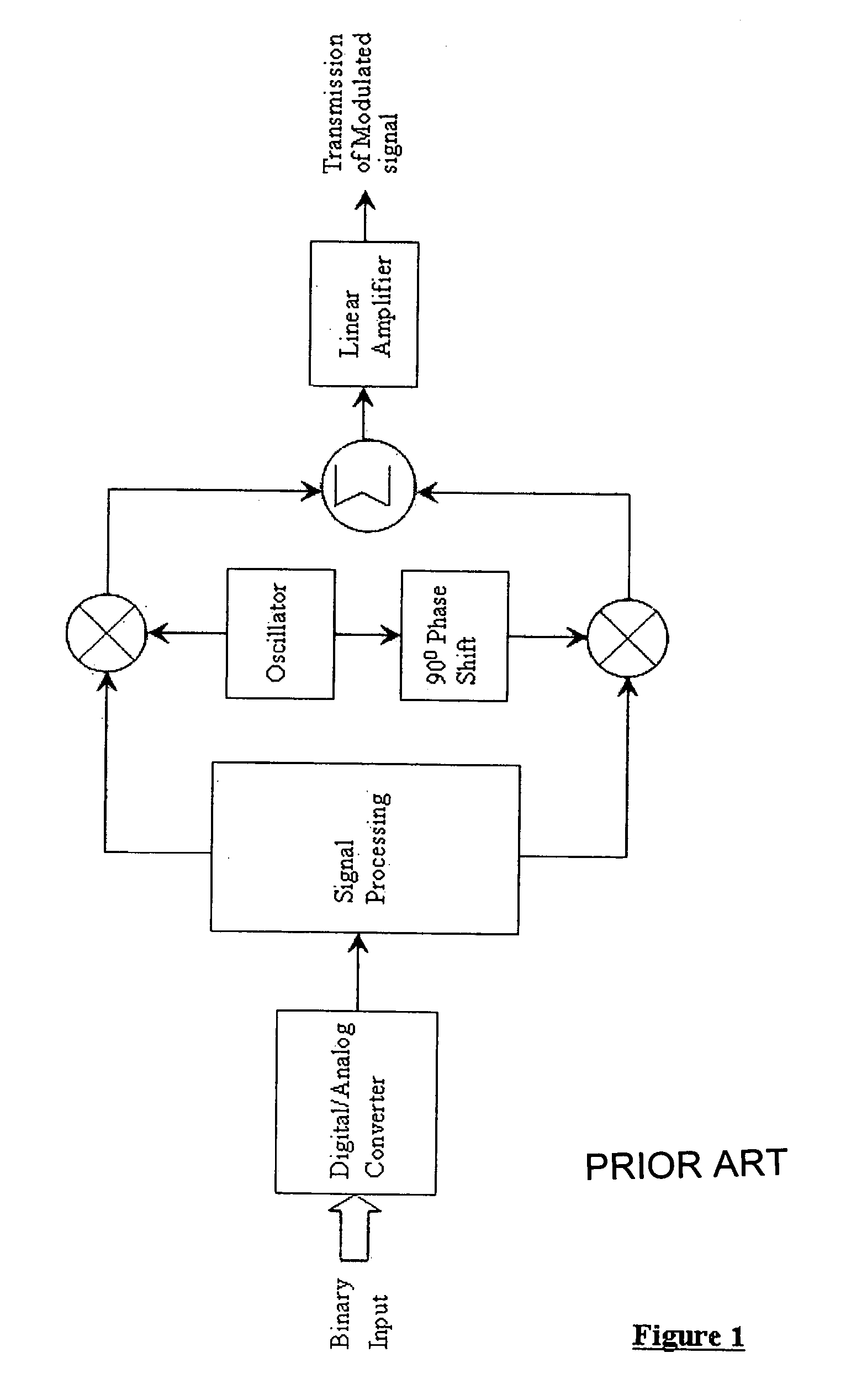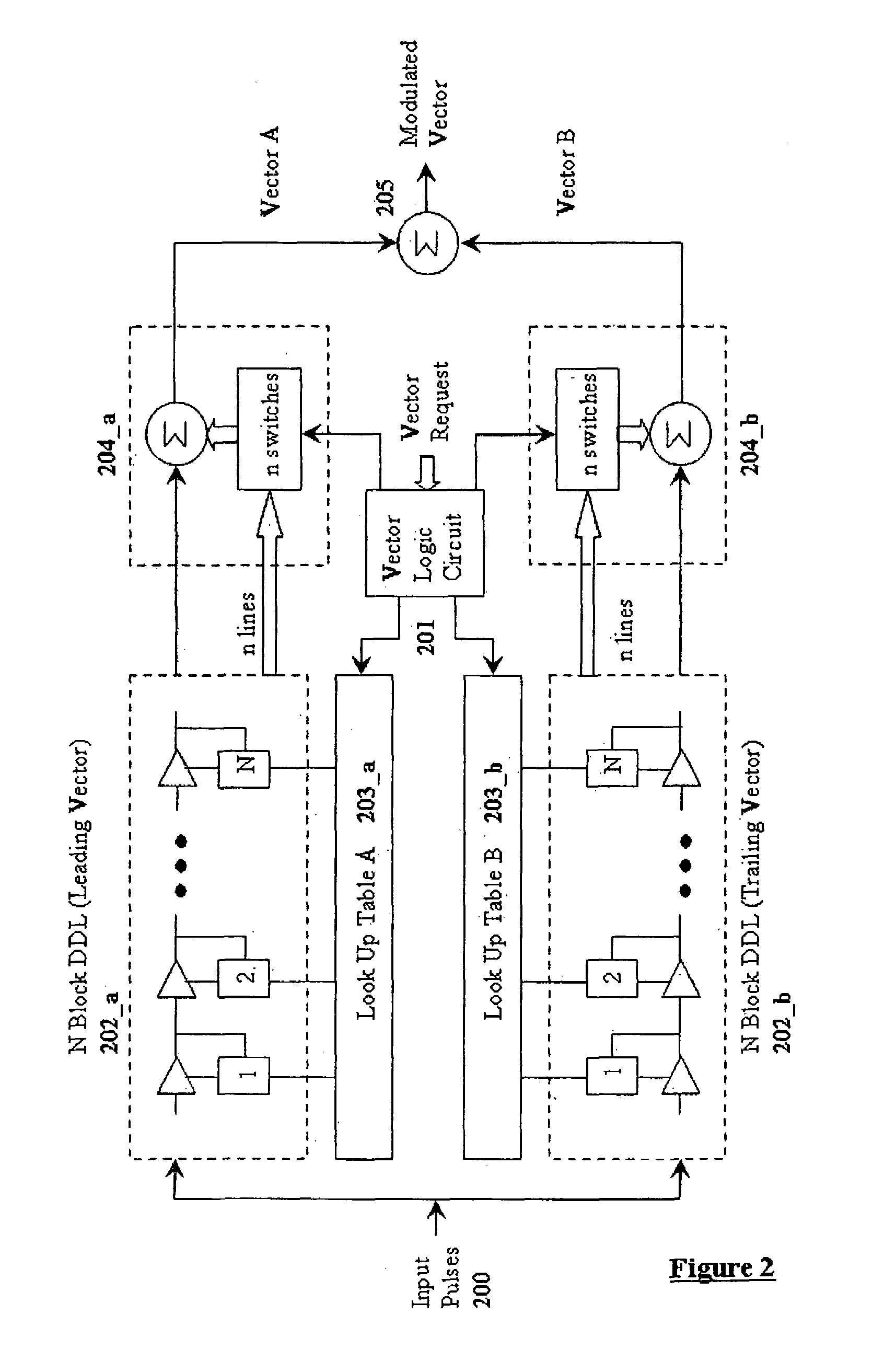Modulation using discrete amplitude adjustment and dual digital delay lines
a digital delay and discrete amplitude adjustment technology, applied in the field of telecommunication systems, can solve the problems of large power consumption of modulators of this form, limited binary digital systems, and inability to achieve multilevel systems. to achieve the effect of facilitating this action
- Summary
- Abstract
- Description
- Claims
- Application Information
AI Technical Summary
Benefits of technology
Problems solved by technology
Method used
Image
Examples
Embodiment Construction
[0060]This invention synthesizes a vector with the desired amplitude and phase using two vectors that have dynamically controlled phases and discretely controlled magnitudes. FIG. 2 illustrates a block diagram of the invention. The invention consists of six major blocks; input pulses 200, a vector logic circuit 201, two digital delay lines 202, two lookup tables 203, two discrete amplitude control circuits 204, and a signal combiner 205.
[0061]The vector logic circuit 201 is supplied with digital data corresponding to the desired magnitude and phase of the output vector. Once the data has been received the logic circuit determines the phase and magnitude of the two vectors needed to generate the desired output vector. The vector logic circuit 201 determines the phase of each vector by using the following assumptions:
[0062]Both vectors will have the same magnitude.
[0063]Each vector will be equidistant, radially, from the resultant vector.
[0064]Having defined the vectors in the above m...
PUM
 Login to View More
Login to View More Abstract
Description
Claims
Application Information
 Login to View More
Login to View More - R&D
- Intellectual Property
- Life Sciences
- Materials
- Tech Scout
- Unparalleled Data Quality
- Higher Quality Content
- 60% Fewer Hallucinations
Browse by: Latest US Patents, China's latest patents, Technical Efficacy Thesaurus, Application Domain, Technology Topic, Popular Technical Reports.
© 2025 PatSnap. All rights reserved.Legal|Privacy policy|Modern Slavery Act Transparency Statement|Sitemap|About US| Contact US: help@patsnap.com



